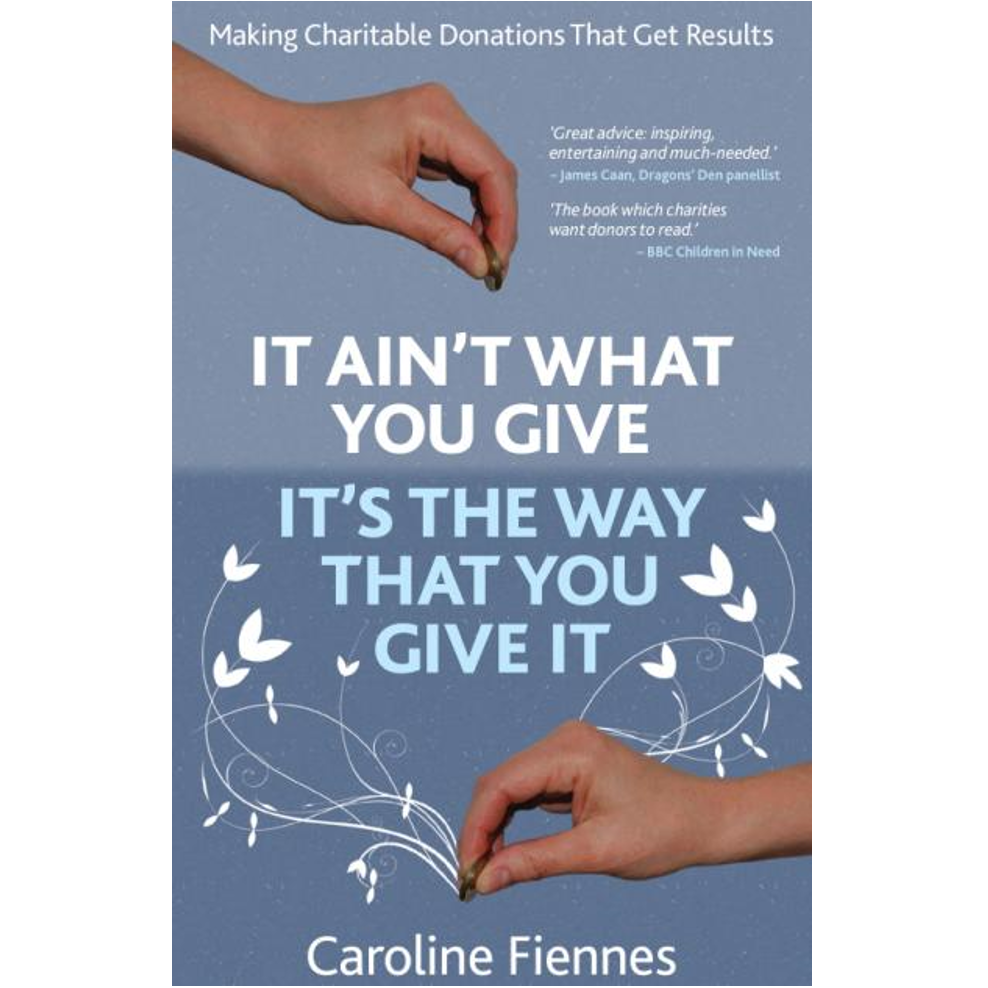Charity Navigator is the world’s largest charity ‘ratings agency’, providing online ratings of  6,000 US-based charities which are used by over 3million donors each year. It’s also the sole organisation slagged off in my book about how donors can best find and support great charities. I’ve joined because it’s moving away from its previous dangerous model and towards something really rather clever.
6,000 US-based charities which are used by over 3million donors each year. It’s also the sole organisation slagged off in my book about how donors can best find and support great charities. I’ve joined because it’s moving away from its previous dangerous model and towards something really rather clever.
Bad cop
Until 2011, Charity Navigator rated charities solely on their financial data. This often means rating them based on the percentage of their total costs which go on ‘administration’. While these data are attractive in being readily available, they’re often misleading.
Contrary to the popular notion that charities’ admin is waste and should be minimised, admin actually includes lots of activities which make charities better at serving beneficiaries. For instance, it includes deeply researching the problem they’re trying to solve, co-ordinating with other organizations and figuring out how to improve. Since charities are addressing problems which are hard – the legendary investor Warren Buffett calls them ‘problems which have already resisted great intellects and often great money’- that money is well-spent.
And hence it turns out that high-performing charities spend more on their admin than do poorer-performing charities. More, not less. Giving Evidence and Professor Dean Karlan, an economist at Yale University, compared the admin spend of charities ranked highly by the rigorous analysts at Give Well, and found it to be consistently higher than the admin spend of charities ranked lower. Scrimping on admin is a false economy.
Thus I and other intelligent observers oppose anything which nudges donors towards charities with low admin costs – on the basis that it demonstrably hurts beneficiaries.
Good cop
Laudibly, Charity Navigator is reinventing its analytical machine. It’s currently using a totally different algorithm to analyse charities serving children’s and family services: the new ratings will launch in December 2012, to be followed by similar analysis of 33 other cause areas, collectively covering 10,000 charities and therein 70% of all US charitable expenditure.
The new algorithm includes (as far as we can see) many factors which indicate that the charity is good at serving beneficiaries. It’s based on three pillars:
- Accountability – Does the organisation have ethical practices, good governance and transparency? Is it accountable to its constituents
- Financial health – Is the nonprofit sustainable? Does it have robust financial strength to survive in good times and bad? Is the overhead not at the extreme end of the continuum? Charity Navigator will still consider a charity’s admin costs, but only in the sense (which I discuss in my book, and agree with) that exceptionally high admin costs are often a good signal that there’s a problem somewhere
- Results. This is the really clever part. It includes seeing whether the charity can clearly articulate how its activities are supposed to achieve its organisational goals. Though this sounds rather obvious, these ‘theories of change’ can be pretty complicated and remarkably few charities actually have them. To rate highly, a charity will also need to cite some evidence for its ‘theory of change’ – this increases our confidence that the charity will succeed – and to have a sensible process for measuring its achievements. Excellently, Charity Navigator will give additional marks to charities which actively listen to what beneficiaries think of the charity’s work: because a charity (usually) doesn’t get paid by beneficiaries, there’s no natural mechanism by which the charity hears their feedback. Charities see no price signals, for example, as commercial companies do. Furthermore charities have no direct incentive to listen to beneficiaries – there’s no financial penalty for not doing so – and as a result, many don’t listen. It’s therefore just fantastic that Charity Navigator is using its unique muscle with donors to incentivise charities to do so.
Isn’t this the same as the analysis by GiveWell?
Yes and no. GiveWell, a small US group, analyses charities in great detail, often publishing 20 or 30 pages on each. Its analysis is among most detailed I’ve seen, as I’ve said before. And that’s obviously great – if, but only if, they’ve looked at the charity or cause in which you’re interested. But it’s hard to scale that model. Charity Navigator aims to have ratings for 10,000 in pretty short-order. It’s therefore broad whereas GiveWell is deep.
I’m delighted and proud to be involved with Charity Navigator now that it’s developing a mechanism for analysing a very broad range of charities based on what really matters – their continued ability to serve beneficiaries.
On beneficiaries, shouldn’t they be allowed to speak at charities’ public meetings? Yes —>

